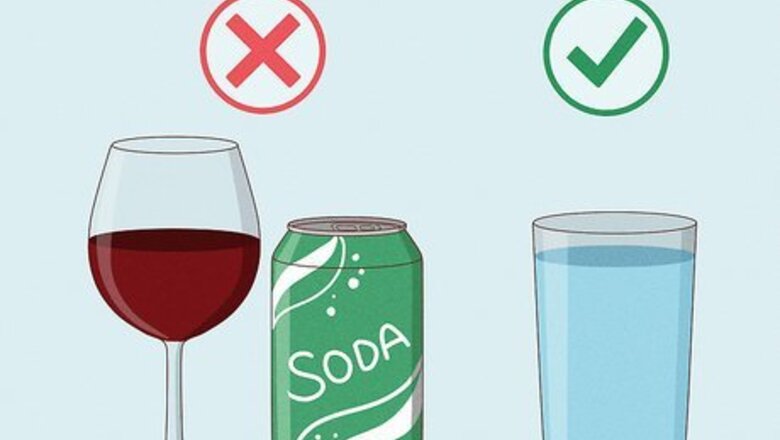
views
X
Trustworthy Source
PubMed Central
Journal archive from the U.S. National Institutes of Health
Go to source
So, what does it take to lose weight with water? Keep reading to learn how to drink more water daily, do a water detox, or follow a water fast.This article is based on an interview with our personal trainer and fitness instructor, Shira Tsvi. Check out the full interview here.
- Drink water before and after meals to help suppress your appetite, stay full longer, and aid digestion.
- Eat less salt (including salty fast food) while consuming more water each day to drop your water weight, and swap sugary drinks for a glass of H2O.
- Try a water detox by drinking large quantities of fruit and vegetable-infused water and eating low-calorie meals.
Daily Water Habits for Weight Loss
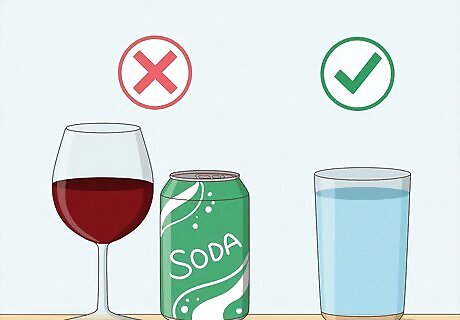
Drink water throughout the day instead of heavier drinks to cut calories. Do your best to avoid high-calorie beverages like milk, juice, alcohol, and soda if you’re trying to lose weight. Instead, opt for a glass of water! Water is 0 calories and is the healthiest drink for you. Drinking lots of water throughout the day also helps you feel full longer so you consume fewer calories during meal time. If you miss the taste of sugary beverages, try drinking flavored water. There are tons of calorie- and sugar-free flavor mixes on the market to choose from. Set an alarm to remind you to drink water throughout the day. This way, you won’t forget to get your daily dose of H20. Keep water near you at all times to get in the habit of drinking it more. Carrying a reusable water bottle in and out of the house is a great way to start drinking more water. On average, men should drink about 16 c (130 fl oz) of water a day and women should drink 12 c (96 fl oz).
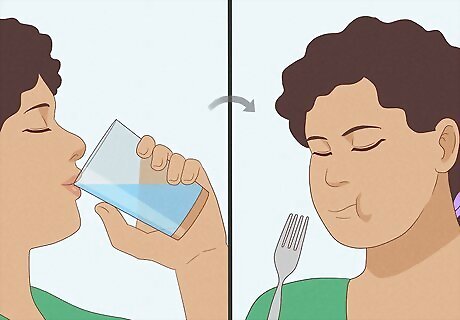
Have a glass of water before each meal to help suppress hunger. Believe it or not, the more water you drink, the less hungry you’ll feel. Start each meal with a glass of water as your appetizer. Then, eat until you feel full or satisfied. The water won’t curb your appetite, but it can help fill your stomach so it’s less tempting to overeat. Drinking water before and after a meal is also an excellent way to aid digestion, as the H20 helps your body break down food and absorb its nutrients! Keep in mind that water doesn’t cancel out an unhealthy diet. If you want to lose weight, make sure you’re eating a healthy diet and getting enough fiber, protein, and nutrients with each meal.
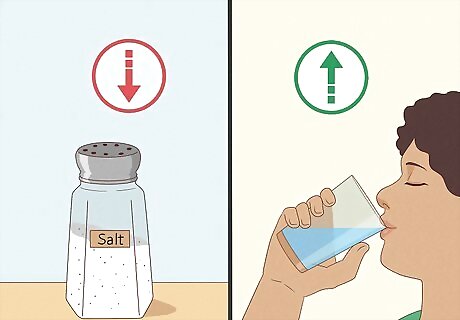
Cut your salt intake and drink more water to lose water weight. Also referred to as water retention, water weight is the extra weight your body makes when storing excess water in your tissues and is completely normal. While it may seem counterintuitive, drinking more water can help you lose weight if you’re consuming less salt. Reducing the amount of dietary salt you consume can help you drop water weight quickly because salt helps your body retain or hold onto water. Skip adding more salt to your meals. Instead, use fresh herbs and spices like garlic, oregano, or pepper flakes. Do your best to avoid fast food when you can. Fast food is extremely high in salt (or sodium) and can make losing weight much harder. Look for sodium-free or low-sodium foods while grocery shopping, as these have less salt than their alternatives.
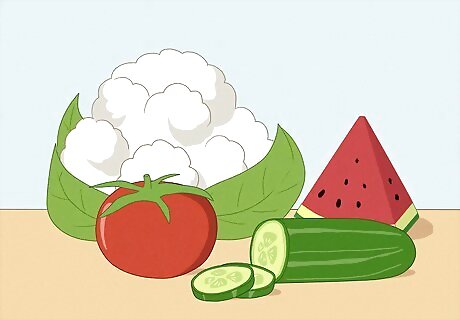
Consume water-rich foods to stay hydrated. If you’re hungry, reach for a snack that’s water-dense to help yourself stay hydrated and lose weight. Doctors recommend consuming ⁄2 fl oz (0.062 c) to 1 fl oz (0.12 c) of water per pound of your body weight daily. Eating foods that are low in calories and full of water is a great way to stay healthy. Try adding more of these fruits and veggies to your diet: Cucumber Iceberg and romaine lettuce Celery Radishes Tomatoes Zucchini and summer squash Bell peppers Cauliflower Strawberries Watermelon Spinach
Doing a Water Detox
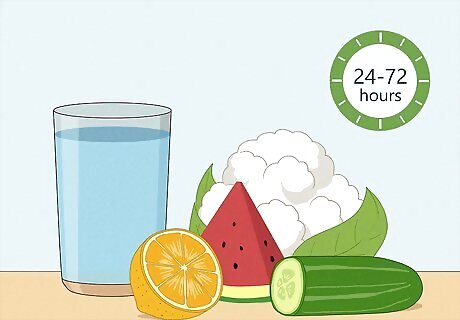
Plan to water detox for 24 to 72 hours at most, depending on your health. Water detoxing is eating a lower-calorie diet and consuming mostly infused water for a set amount of time. How long you detox depends entirely on your health and well-being. Experts recommend detoxing for no more than 3 days and getting a doctor’s approval before starting. Know the risks: A water detox may result in fatigue, dizziness, nausea, muscle loss, and dehydration. A water detox is not recommended for those with diet limitations, diabetes, or a history of disordered eating. If you feel sick at any point in your detox, stop immediately and return to your regular eating habits. No diet or weight loss plan is worth sacrificing your health and overall well-being. Keep in mind that a water detox isn’t a long-term weight loss solution. While it can help you become more vigilant with your water intake, it isn’t something you should stick with for longer than 3 days as your body needs nutrients to thrive.
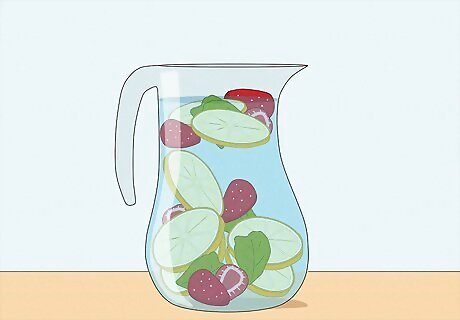
Cut up veggies and fruits and place them in a pitcher with water. The great thing about a water detox is you can make and customize your beverages at home. Simply slice the fruits and veggies of your choice into small pieces and drop them in a pitcher. Then, fill the pitcher with water and place it in the fridge to chill. Here are some recipes and flavor combinations you can try: Strawberry, lemon, and basil Watermelon, mint, and lime Orange, grape, and rosemary Cucumber, mint, and lemon Opt for the freshest fruits and vegetables for the best taste, as spoiled food can make your water taste bad. Don’t have a pitcher? Place your cut veggies and fruits in another bottle with a lid. This way, your water will be portable and even easier to drink.
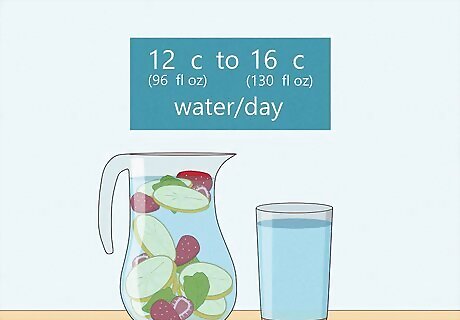
Drink at least 12 c (96 fl oz) to 16 c (130 fl oz) of water a day. During a water detox, it’s important to get your recommended dosage of water each day. The more water you drink during a detox, the better, but don’t overdo it! Rather than chugging everything in one sitting, take it slow by sipping on your infused water every so often. Keep in mind that there will likely be more bathroom breaks in your day when you do a water detox, so plan accordingly.
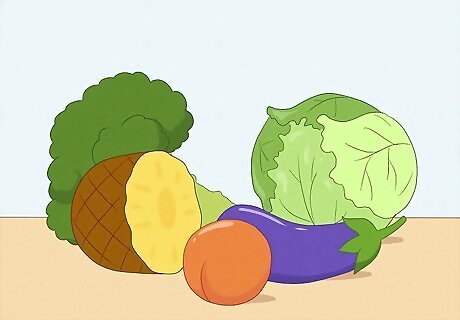
Eat water-rich foods while you’re detoxing. You don’t have to avoid food while doing a water detox, but stick to eating low-calorie foods with a high water content for the best results. Try watermelon, strawberries, zucchini, peaches, tomatoes, cauliflower, pineapple, eggplant, broccoli, and iceberg lettuce. Choose lean meats, like chicken and turkey, over red meats for protein.
Following a Water Fast
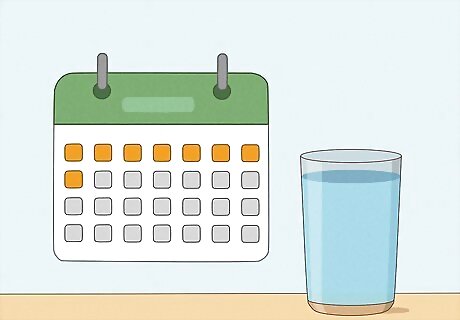
Aim to water fast for a maximum of 8 days. Water fasting is when you consume nothing but water for a dedicated amount of time. Studies have shown that this can be an effective way to lose weight quickly and naturally speed up the metabolism. Even so, experts warn that water fasting shouldn’t be done for more than 8 days; otherwise, the body could go into extreme stress. Know the risks: Water fasting can result in fatigue, dizziness, stomach cramps, nausea, constipation, muscle loss, and dehydration. Chat with your doctor before attempting a water fast to see if it’s a healthy weight loss option for you. While studies have shown that water fasting is effective for short-term weight loss, it’s also been linked to rapid weight gain once the fast ends. If doing a full water fast isn’t ideal for you, try doing an intermittent fast. Replace 1 or 2 meals with water and have 1 low-calorie meal. This can be just as effective to jumpstarting weight loss.
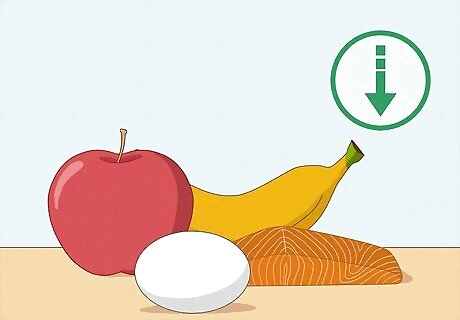
Eat lightly prior to the fast to prepare your body. Before you try a water fast, start lowering your daily caloric intake to help prepare your body for the decrease in calories to come. Swap high-calorie snacks for a piece of fruit, and trade red meats for lean meats. Lessen the number of snacks you eat and the size of your portions so your body can get used to eating less. If you feel extremely hungry or tired during this process, it may be a warning sign that fasting isn’t healthy for you. Talk to your doctor about your specific caloric needs to ensure you’re making the right choice for your body.
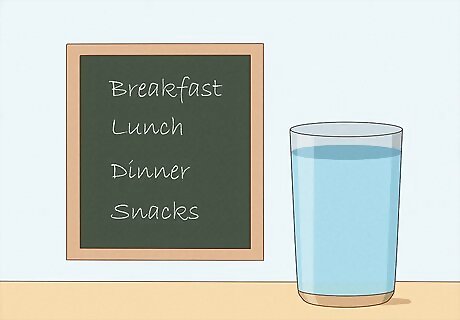
Start your fast by only drinking water when you’re hungry. There’s no need to plan your meals when fasting because the menu consists of one thing: plain water! Drink only water for breakfast, lunch, dinner, and snacks. Pay attention to how you feel emotionally and physically during this time, noting any hunger triggers or cues. If you feel dizzy during a water fast, know that it’s okay to take a sip of tea or seltzer water or have a small, light snack to help calm your system and get back on track. Try meditating during your fast to help reconnect with your body and get your mind off food.
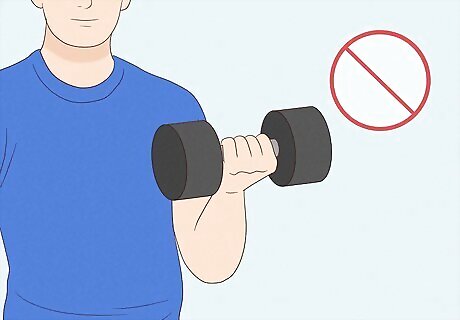
Avoid exercising on a water fast. Exercising uses a lot of energy, and while fasting, you won’t be able to replenish it as quickly. So, avoid exercising on the days you choose to fast. The more physical strain you put on your body, the worse you’ll feel.
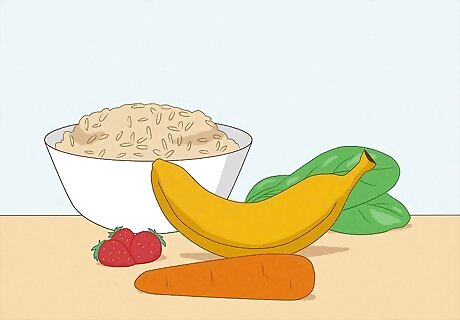
Introduce light foods back into your diet after you fast. While you may be hungry right after your fast, take it easy. Rather than gobbling down everything in sight, gradually ease back into eating normally. Opt for raw fruits and vegetables, lean meats, and brown rice. Continue drinking water to stay hydrated. Know that gaining a few pounds back after a water fast is completely normal. Your body is redistributing its weight and rebuilding muscle.













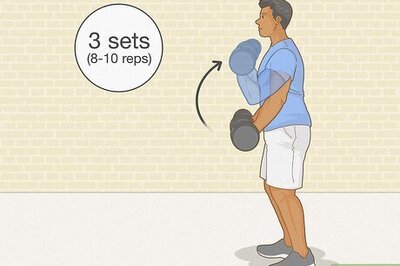
Comments
0 comment